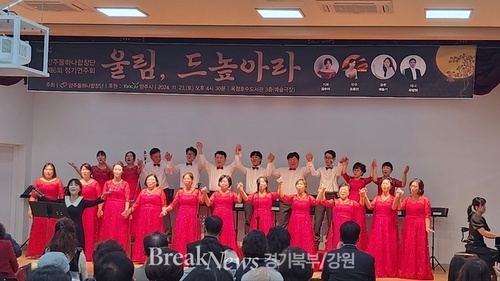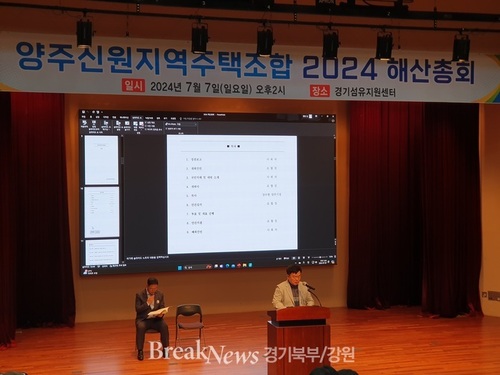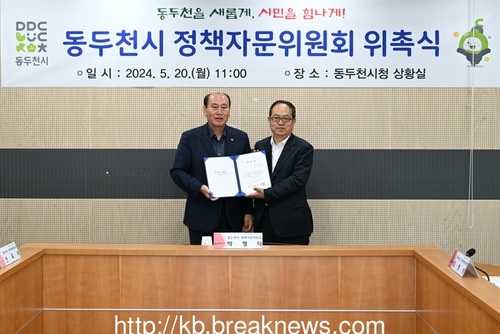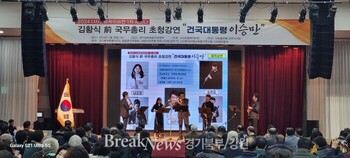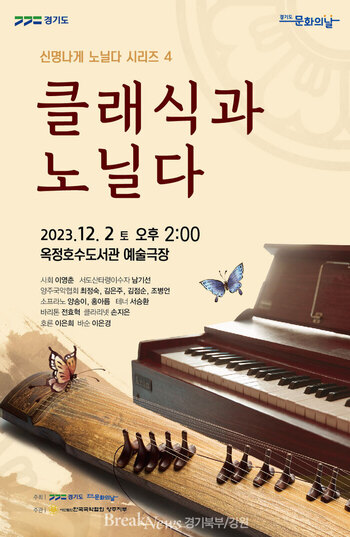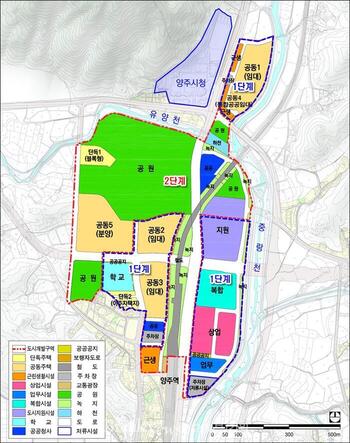만성중이염을 앓아 온 강 씨는 만성중이염의 합병증으로 발생한 ‘심도 난청’ 때문에 바로 옆에서 크게 말하는 것도 알아듣기 어려웠고 코로나 감염 예방을 위해 마스크를 착용하게 되어 그나마 사람들이 말하는 입모양을 보며 그 내용을 유추하던 것도 힘들게 되자 우울감까지 겪게 된 강 씨는 수술을 고려했고, 수소문 끝에 의정부을지대학교병원 이비인후과에서 청각 재활을 위한 ‘인공와우이식’과 만성중이염 재발을 방지하기 위한 ‘추체아전절제술’을 동시에 받았고 수술 후 청력을 되찾은 강 씨는 “집에서 키우는 강아지가 내게 다가오는 발걸음 소리도 들린다”며 감사함을 전했다.
난청은 소리를 듣는 데 어려움이 있는 증상을 의미하고, 원인은 매우 다양하나 크게 중이염, 고막 손상 등 소리 전달과정에서 이상이 발생한 전음성난청과 뇌로 신경전달 과정에서 이상이 발생한 감각신경성난청으로 분류되며, 귀에서 고름이 나오고 대개 고막 천공을 동반하는 만성중이염은 전음성 난청의 대표적 예로, 수술적 치료를 통해 염증을 제거하고 고막을 재건하여 청력을 되찾을 수 있으나, 만성중이염이 오래 방치되어 달팽이관의 청신경까지 손상된 경우에는 수술을 하더라도 청력의 완전한 회복은 어렵다고 전했다.
‘보청기’는 난청 환자에서 가장 쉽고 간단한 청각 재활 방법이며, 보청기의 사용으로도 말귀를 알아듣지 못하는 고도, 심도 난청의 환자는 인공와우 이식 수술을 통해 청각 재활이 가능하고, 손상된 달팽이관의 청신경을 대신하는 인공와우 기기를 이식하는 수술을 받은 뒤, 머리 바깥쪽에 외부 장치를 부착하면 완전히 청력을 잃었던 사람도 소리를 들을 수 있으며, 즉, 인공와우는 손상된 달팽이관(와우)으로 거의 듣지 못하는 환자에서, 소리 자극을 전기 신호로 변환하여 자극을 전달하는 기기라고 했다.
그러나 만성중이염이 심한 경우에는 인공와우 이식을 하더라도 염증이 반복되며 인공와우 기기가 고장나거나, 인공와우 이식 수술 후 합병증이 발생할 수 있으며, 이런 이유로 이전에는 만성중이염으로 인한 난청 환자는 인공와우 이식을 할 수 없는 금기였다고 했다.
이비인후과 김신혜 교수는 “인공와우 이식은 달팽이관에 전극 삽입이 필요한데, 만성중이염 환자의 경우 전극 삽입 과정에서 염증이 파급되어 수술 후 미로염이나 뇌막염이 발생할 수 있어 추체아전절제술 등 특수한 술식을 통해 염증 재발 가능성을 완전히 차단한 상태에서 안전하게 인공와우 이식을 시행할 수 있다”고 설명했다. 추체아전절제술이란 중이로 통하는 두 관문인 외이도와 이관을 모두 막고, 중이 내의 모든 염증 병소를 제거하는 수술로 만성중이염의 재발 가능성을 완전히 차단할 수 있다.
이처럼 인공와우 수술은 손상된 청신경 대신 소리를 들을 수 있게 하는 인공와우 장치를 이식하는 것으로, 최근 의료보험이 적용되며, 보청기로도 들을 수 없는 고도/심도의 난청 환자의 삶의 질을 향상시키고 있으며, 노화와 달리 적극적 치료 중요하다고 했다.
김신혜 교수는 “난청을 그저 노화 과정이라 여기며 방치하지 말고, 이비인후과에 내원하여 난청의 원인과 정도에 맞는 적절한 청각 재활 방법을 통해 새로운 삶을 찾도록 해야 한다”라고 조언했다.
*아래는 위 기사를 '구글 번역'으로 번역한 영문 기사의 [전문]입니다. '구글번역'은 이해도를 높이기 위해 노력하고 있습니다. 영문 번역에 오류가 있을 수 있음을 전제로 합니다. *The following is [the full text] of the English article translated by 'Google Translate'. 'Google Translate' is working hard to improve understanding. It is assumed that there may be errors in the English translation.
Uijeongbu Eulji University Hospital to restore hearing with cochlear implant
'It's not aging' Hearing loss that even causes depression
[Reporter Jang Seon-hee = Northern Gyeonggi/Gangwon] Professor Kim Shin-hye of the Department of Otolaryngology and Throatology at Uijeongbu Eulji University Hospital said he would find out about hearing loss, which is important for active treatment, as it can cause depression and even dementia due to communication interruption in severe cases of hearing loss in old age.
Mr. Kang, who had suffered from chronic otitis media, had difficulty in hearing people speaking loudly because of 'deep hearing loss' caused as a complication of chronic otitis media. Kang, who suffered from depression as it became difficult to do, considered surgery, and after inquiry, he underwent 'cochlear implantation' for auditory rehabilitation and 'total cone resection' to prevent recurrence of chronic otitis media at the Department of Otolaryngology, Eulji University Hospital, Uijeongbu. After recovering his hearing, Mr. Kang expressed his gratitude, saying, "I can hear the footsteps of my dog approaching me."
Hearing loss refers to a symptom of difficulty in hearing sound, and although the causes are very diverse, it is mainly classified into conductive hearing loss caused by abnormalities in the sound transmission process such as otitis media and damage to the eardrum, and sensorineural hearing loss caused by abnormalities in the nerve transmission to the brain. , Chronic otitis media with pus coming out of the ear and usually accompanied by perforation of the tympanic membrane is a typical example of conductive hearing loss. It is possible to recover hearing by removing inflammation and reconstructing the tympanic membrane through surgical treatment. If the auditory nerve is damaged, it is difficult to recover completely even with surgery.
'Hearing aid' is the easiest and simplest method for hearing rehabilitation for patients with hearing loss, and patients with severe or profound hearing loss who cannot understand speech even with the use of hearing aids can have hearing rehabilitation through cochlear implant surgery and replace the damaged cochlear nerve. After surgery to implant a cochlear implant, an external device attached to the outside of the head allows people who are completely deaf to hear, that is, in patients who have little hearing with a damaged cochlea (cochlear implant), It is a device that transmits the stimulus by converting the stimulus into an electrical signal.
However, in severe cases of chronic otitis media, even after cochlear implantation, inflammation is repeated and the cochlear implant device may malfunction or complications may occur after cochlear implant surgery. He said it was an impossible taboo.
Professor Shin-Hye Kim of the Department of Otolaryngology said, “Cochlear implantation requires electrode insertion into the cochlea, but in patients with chronic otitis media, inflammation spreads during the electrode insertion process, which can cause labyrinthitis or meningitis after surgery. It is possible to safely perform a cochlear implant in a state in which the implant is completely blocked.” Total cone resection is an operation that blocks both the external auditory meatus and the ear canal, the two gateways to the middle ear, and removes all inflammatory lesions within the middle ear.
As such, cochlear implant surgery involves implanting a cochlear implant device that allows sound to be heard instead of the damaged auditory nerve. Recently, medical insurance is applied, improving the quality of life of patients with severe/severe hearing loss who cannot hear even with a hearing aid. Unlike aging, active treatment is important.
Professor Shin-hye Kim advised, "Do not neglect hearing loss as just an aging process, but visit the otolaryngology department and find a new life through appropriate hearing rehabilitation methods that are appropriate for the cause and degree of hearing loss."
이 기사 좋아요
<저작권자 ⓒ 브레이크뉴스 경기북부 무단전재 및 재배포 금지>

댓글
장선희 기자, 의정부시, 의정부을지대학교병원, 노년기 난청, 의사소통 단절, 우울증, 치매, 이비인후과 김신혜교수, 만성중이염, 합병증, 심도 난청, 인공와우이식, 청각 재활 관련기사목록
|
많이 본 기사
경기북부 많이 본 기사
|














